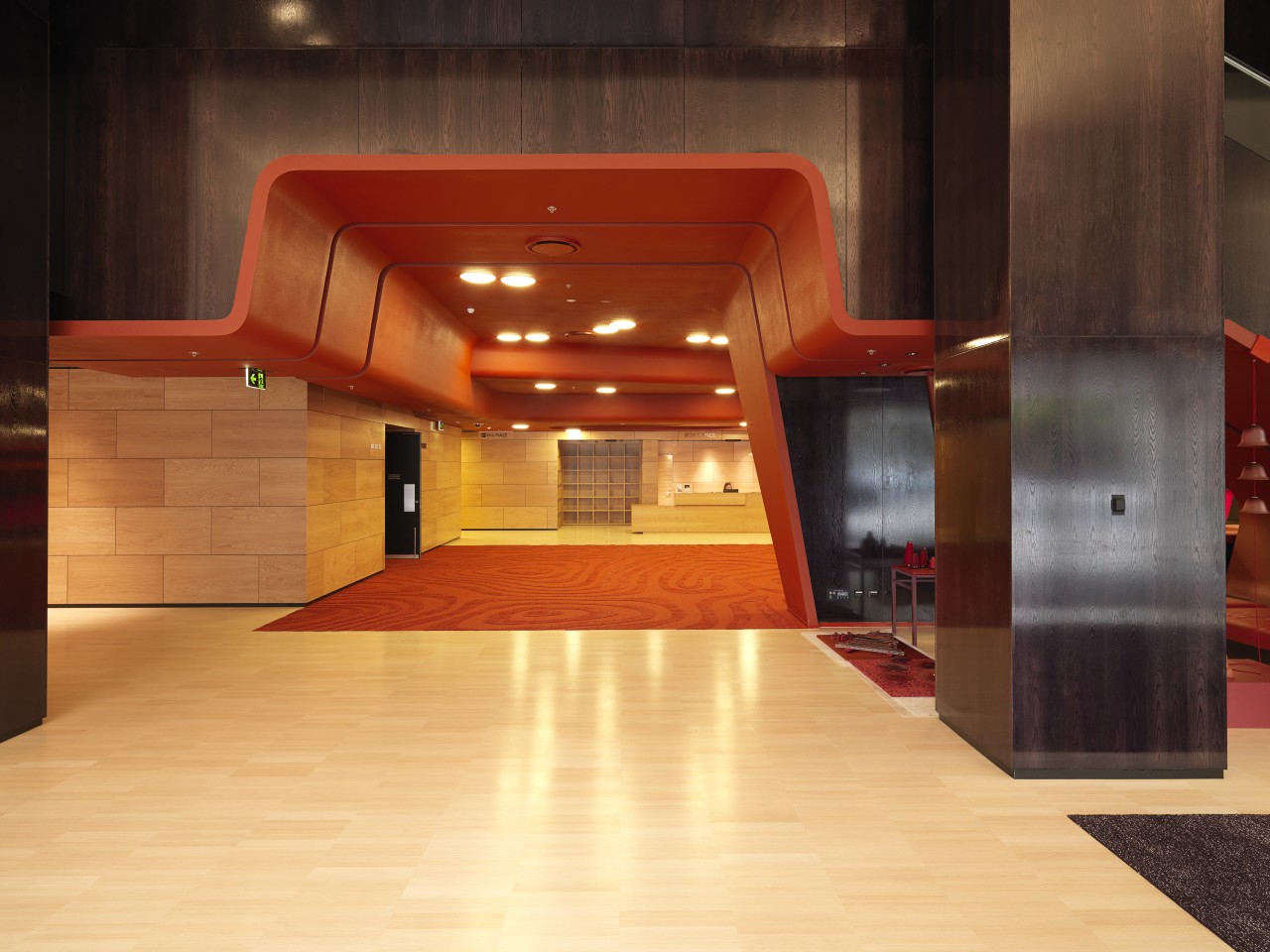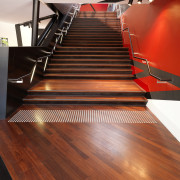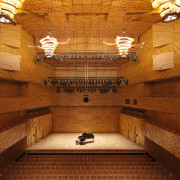Cultural perspective
Two new performing arts centres the Melbourne Recital Centre and the Melbourne Theatre Company Theatre sit side by side with distinct but complementary identities
What's in a face? In architecture, a facade's design is often about complementing the surroundings of the structure or creating an energy-saving environmental response. While these are important, an architect's inspiration can go further creating an exterior that speaks about the building's cultural function.
The Melbourne Recital Centre (MRC) and Melbourne Theatre Company (MTC) Theatre illustrate the point. Architectural firm ARM (Ashton Raggatt McDougall) designed both buildings, which are accessed from a landscaped civic plaza off Southbank Boulevard. This plaza was designed to limit automobile movement and encourage pedestrian traffic, an important part of the greater vision for the area.
MTC clients were Melbourne Theatre Company and University of Melbourne, while the MRC clients were Melbourne Recital Centre and Arts Victoria. The whole project was managed by Major Projects Victoria for the Victorian government on behalf of the client groups, with Bovis Lend Lease realising the complex build.
Design director for ARM on this project Howard Raggatt says that collectively the structures present a vibrant new civic space within Melbourne's thriving arts precinct.
The differing facades of the two cultural centres have a visual buffer between them in the form of a cafe frontage. This has its own architectural personality, but is in fact part of the Recital Centre.
"Although they present a harmonious street presence, the two exteriors tell quite different stories," says Raggatt. "The new MTC drama theatre's sculptural facade evokes the theatrical mainstays of backdrop and illusion with a 3D steel tube suspended facade that plays with viewer perspective."
The articulated face appears to step off the building, much as a performer might reach into the crowd to capture its attention.

"The overall pattern challenges spatial perceptions through the blurring of two- and three-dimensional space," says Raggatt. "What looks as if it is shaped is actually flat, and in the same way, an apparently 2D surface is really 3D."
The facade system is composed of iridescent painted steel pipework mounted to prominent effect against black aluminium cladding. At night, floodlights make the pipework stand out, and the black facade seems to disappear from view almost completely.
"This is the first permanent home for the Melbourne Theatre Company and it caters to a variety of theatrical presentations," says the architect. "Behind the facade, the MTC Theatre features the 500-seat Sumner Theatre, a single-tier, proscenium arch theatre that includes a full fly tower and backstage accommodation for actors and technical staff."
The Sumner Theatre also has a fully demountable stage floor, retractable Juliet balconies and 66 fully automated winches. In addition, the complex contains the 150-seat Lawler Studio for smaller productions and rehearsals, front-of-house facilities, and a cafe. The first-level foyer to the theatre provides patrons with views back to the city skyline as they enjoy a drink before the show or during intervals.
"The interior decor is an extension of the exterior concept, with ambiguous planes, lines and angles in bright colours," says the architect. "Patrons call to mind the magic and illusion of the theatrical world long before they enter the theatre proper."
If the MTC's tubular facade generates shifting visual perceptions, and a strong interaction with the street, then the Melbourne Recital Centre takes an entirely different standpoint. Standing tall, the building is fronted with an organic-look, wrought iron grid, echoed elsewhere on the facade in patterned cladding.
"The concept for the MRC was that the delicate, ephemeral nature of classical recitals and other artistic presentations are precious, fragile commodities," says Raggatt. "The facade is intended to evoke the sense of a protective wrapping such as bubble wrap."
The Melbourne Recital Centre has been designed primarily as a chamber music venue. The Elisabeth Murdoch Hall has an audience capacity of 1000, and the more intimate 150-seat Salon space is intended for pre-concert talks and experimental works.
"Taking pride of place in the Recital Centre, the Elisabeth Murdoch Hall provides the highest quality acoustics for musical performance and recording in Australia," says Raggatt. "To achieve this, the recital hall has been completely isolated from the ground and the surrounding building structure. It is enclosed in a 250mm concrete box mounted on 38 sets of large steel springs that mitigate any ground vibrations.
"The smaller Salon auditorium, entered from the ground floor, is also isolated from ground vibration."
Understanding the structural independence of these venues, isolated within the building shell, makes the bubble-wrap exterior seem completely appropriate.
"The two buildings are a significant addition to the cultural life of the city, offering expanded and improved opportunities for theatrical and musical performance, and state-of-the art rehearsal, recording, marketing, mentoring, professional development and research facilities all in distinctive, contemporary style."
Credit list
Architects
Principal contractor
Building services
Quantity surveyor
Hydraulic engineer
ESD Consultant
Specialist lighting
MTC Theatre facade systems
MTC roof systems
MRC glazing systems
Elisabeth Murdoch Hall floors
Seating
Project manager
Acoustic and theatre consultants
Structural and civil engineer
Building surveyor
Landscape architect
Signage and graphics
Facade engineering
MTC glazing systems
MRC facade systems
MRC roofing system
Acoustic multi-profiled panel
Lighting
Story by: Charles Moxham
Home kitchen bathroom commercial design
Classic looks, contemporary efficiency
Personality plus
Diving into nature















